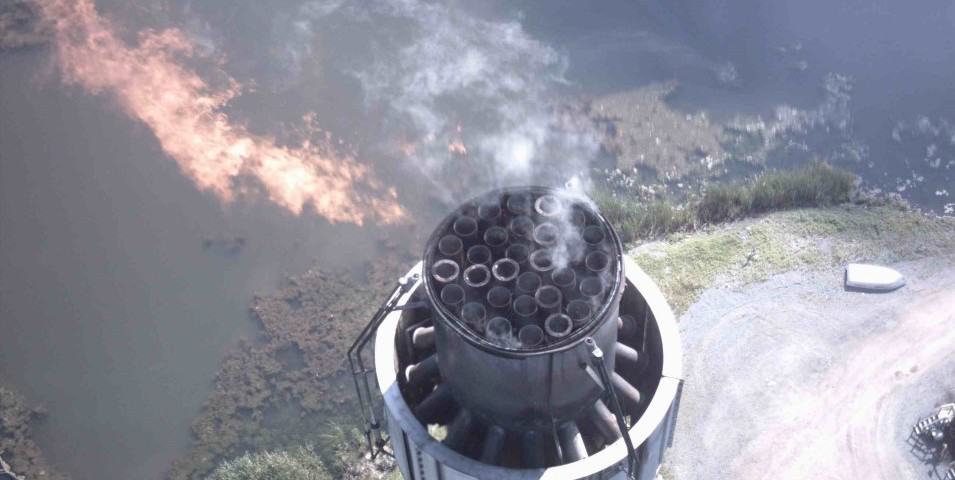
Benefits of Aerial Real Estate Photography
December 15, 2017How to Get Started with Drone Aerial Photography
December 19, 2017Many times, surmounting huge heights could be a thing of worry especially when you’ve got a job to do such as taking a decent and clear image of a building or probably, inspecting gas combustion in an industrial setting.
Ideally, flare stack inspection could be an expensive, time-consuming and stressful process. This is especially if there isn’t enough space to use a helicopter to carry out the exercise albeit at a higher cost. Due to the immense level of heat produced by flare stacks, it is imperative to devise a mechanism that will be responsive and react fast to this need.
Usually, flare stack inspection becomes necessary if you are keen on determining some physical properties or other parameters or you probably want to carry out research or study. Due to the risks and high temperature (over 1000 degrees Celsius), you do not wish to climb the stairs to the top of the refinery or endanger your life by getting close to the unimaginable heat that is being generated.
However, before attempting to climb the stairs or using a sky lift to view the stack, it must be put off first for several hours, and this has enormous economic consequences. Another option is to use helicopters albeit; this is a more expensive option.
This is where drones become useful and relevant. Remember, we have been discussing this technological item and how it has been affecting our lives positively. Drones are beginning to find relevance and usefulness not only in photography and image production but also in flare stack inspection and thermal study.
Also, several oil companies have started employing and deploying these devices for use in their daily operations.
By definition, a flare stack is typically a piece of engineering structure that is used to convey excess heat or burn away excess gas. They are usually about 50m to 100m in heights. In the oil and gas industry, excess gas is traditionally gotten rid of to reduce the pressure on the pipes and other equipment in the refinery.
Flare stack inspection using drones is the new trend. As discussed earlier, it is cheaper and cost-effective, faster and time-saving and more importantly, it is a much safer way of inspecting flare stacks. Apart from the advantages mentioned above, perhaps the most crucial reason why oil companies use drones for flare inspections is that they wouldn’t have to shut down the whole system before maintenance and repairs can efficiently be carried out, hence, a drastic reduction in machine downtime.
Why must flare stacks be inspected?
In engineering, maintenance is critical to the lifespan of any machine, material or equipment. Usually, inspection of flare stacks should be done every three (3) months or at the most, annually. When carrying out this inspection and maintenance, it is necessary to look out for the mechanical components of the flare stack that are worn-out and replace same. If replacement is not particularly needed, repairs can simply be done.

